- Use privacy-focused browsers like Brave, Firefox (with enhanced settings), or Tor instead of browsers that collect user data
- Switch to private search engines like DuckDuckGo or Startpage that don’t log your queries
- Use a VPN to encrypt traffic and mask your IP address
- Minimize data sharing on social media by restricting what personal information you share
- Use encrypted messaging and email services like Signal, Threema, or ProtonMail
- Enable multi-factor authentication and use password managers like Bitwarden or 1Password
- Disable ad tracking and third-party cookies using browser settings and extensions
- Use private payment methods like virtual credit cards or Privacy.com
- Review and limit app permissions to reduce unnecessary data collection
- Regularly check data breach databases like Have I Been Pwned
These steps represent a practical approach to maintaining better privacy without requiring extreme measures.
In-Depth Explanation of Privacy Methods
1. Privacy-Focused Browsers
Standard browsers, such as Chrome and Edge, are designed to collect user data, which helps their parent companies, Google and Microsoft, build advertising profiles. They track browsing history, search queries, and even mouse movements.
Privacy-focused alternatives:
- Brave: Built on Chromium but blocks trackers and ads by default. Features include fingerprinting protection, script blocking, and built-in Tor integration for private windows.
- Firefox (with privacy settings): Can be configured to block trackers, cookies, and fingerprinting. The Enhanced Tracking Protection feature blocks social media trackers, cross-site cookies, cryptominers, and fingerprinters.
- Tor Browser: Routes traffic through multiple encrypted relays, making it extremely difficult to track users’ online activities. It also blocks trackers, resists fingerprinting, and automatically clears cookies at the end of each session.
Advanced features to look for:
- Container tabs (Firefox) to isolate browsing activity
- HTTPS-only mode
- Anti-fingerprinting technology
- Default cookie blocking
- Webrtc leak protection
2. Private Search Engines
Standard search engines, such as Google, store every search query, creating detailed profiles of users’ interests, habits, medical concerns, and political views.
Privacy-focused alternatives:
- DuckDuckGo: Doesn’t store personal information, search history, or IP addresses. Shows the same results to all users rather than creating filter bubbles.
- Startpage: Acts as a proxy to Google search results without the tracking. Offers Anonymous View to visit search results without revealing your identity.
- Searx: Open-source metasearch engine that can be self-hosted. Aggregates results from multiple search engines without storing user data.
What makes them different:
- No search history retention
- No user profiles
- No personalised ads
- No IP address logging
- No passing search terms to the clicked websites
3. Virtual Private Networks (VPNs)
VPNS create an encrypted tunnel between your device and a remote server, protecting data in transit.
Key VPN features:
- Encryption: Uses protocols like Openvpn, WireGuard, or IKEv2 to encrypt all internet traffic
- IP masking: Replaces your actual IP address with that of the VPN server
- DNS leak protection: Prevents DNS requests from revealing your browsing activity
- Kill switch: Blocks internet access if the VPN connection drops
Important considerations:
- Look for no-logs policies (ideally verified by independent audits)
- Check jurisdiction (avoid countries with mandatory data retention laws)
- Consider performance impact (connection speed reduction)
- Evaluate security protocols offered
4. Minimising Social Media Data Sharing
Social media platforms profit from collecting and analyzing personal information.
Effective strategies:
- Profile minimisation: Share only essential information in profiles
- Privacy settings: Configure who can see posts, photos, friends lists, and contact information
- Content review: Regularly audit and remove older content
- Location services: Disable location tagging on posts and photos
- Third-party access: Revoke permissions for connected apps and services
- Alternative accounts: Use pseudonyms for non-professional interactions
- Activity management: Disable “seen” notifications and typing indicators where possible
- Tagging controls: Require approval before being tagged in photos or posts
5. Encrypted Messaging and Email
Standard communication services often have access to message content and metadata.
Encrypted alternatives:
- Signal: End-to-end encrypted messaging with minimal metadata collection. Features include disappearing messages and secure voice and video calls.
- Threema: It doesn’t require phone numbers or personal information, allowing for anonymous use. Stores minimal data on servers.
- ProtonMail: End-to-end encrypted email with zero-access encryption, meaning even ProtonMail can’t read your messages. Based in Switzerland with strong privacy laws.
- Tutanota: Encrypted email service with calendar and contact features, all protected with end-to-end encryption.
Technical aspects:
- End-to-end encryption ensures only the sender and recipient can access the content
- Zero-knowledge design prevents service providers from accessing data
- Metadata minimisation reduces information about who communicates with whom
- Self-destructing messages limit the lifetime of sensitive communications
6. Multi-Factor Authentication (MFA) and Password Managers
Password managers generate and store unique, complex passwords for each service.
Key features:
- AES-256 encryption for the password vault
- Zero-knowledge architecture (the company can’t access your passwords)
- Cross-platform synchronization
- Automatic form filling
- Security breach alerts
- Password health analysis
Popular options:
- Bitwarden: Open-source with free and premium tiers
- 1Password: User-friendly with robust security features
- KeePass: Offline password manager with optional synchronisation
Multi-factor authentication adds additional verification beyond passwords:
- Something you know (password)
- Something you have (authentication app, security key)
- Something you are (fingerprint, face)
MFA methods (from most to least secure):
- Hardware security keys (YubiKey, Titan)
- Authenticator apps (Authy, Google Authenticator)
- Push notifications
- SMS codes (vulnerable to SIM swapping)
7. Ad Tracking and Cookie Management
Tracking technologies:
- First-party cookies: Set by the site you’re visiting
- Third-party cookies: Set by external domains (often advertisers)
- Fingerprinting: Identifying users through browser and device characteristics
- Supercookies: Persistent identifiers stored outside normal cookie storage
- Pixel tracking: Invisible images in emails and websites that track views
Blocking methods:
- uBlock Origin: Open-source content blocker that prevents tracking and ads
- Privacy Badger: Learns to block trackers based on their behavior
- Cookie autodelete: Removes cookies when you leave a website
- Browser settings: Configure to block third-party cookies and send Do Not Track requests
- Global opt-out tools: Your AdChoices and Google Ad Settings let you opt out of personalised advertising
8. Private Payment Methods
Financial transactions create detailed data profiles that can be used for targeting or surveillance.
Privacy-preserving options:
- Virtual credit cards: Generate temporary card numbers linked to your real account with customizable spending limits and expiration dates
- Privacy.com: Creates virtual cards with merchant locks and spending limits
- Cryptocurrency: Varies in privacy level from pseudonymous (Bitcoin) to privacy-focused (Monero)
- Cash: Still the most private payment method for in-person transactions
- Prepaid cards: Purchased with cash for online transactions without linking to identity
- Masked emails for subscriptions: Services like AnonAddy or SimpleLogin create forwarding addresses to reduce tracking across services
9. App Permission Management
Mobile apps often request excessive access to device features and data.
Permission categories to review:
- Location: Often requested unnecessarily; consider “only while using” instead of “always”
- Contacts: Grants access to your entire address book
- Microphone/Camera: Can potentially be misused for surveillance
- Storage: Gives apps access to files and media
- Phone: Allows access to call logs and phone identity
- SMS: Can read and potentially send messages
- Background activity: Enables tracking even when app isn’t in use
Best practices:
- Regular permission audits (at least quarterly)
- Default to “deny” for new app permissions
- Use mobile OS privacy features (iOS App Privacy Report, Android Privacy Dashboard)
- Consider app alternatives with fewer permission requirements
- Use web versions of services when possible
10. Data Breach Monitoring
Personal information is often exposed through security breaches at companies that hold your data.
Monitoring services:
- Have I Been Pwned: Checks email addresses against known data breaches
- Firefox Monitor: A Similar service integrated with the Firefox browser
- Credit monitoring: Watches for new accounts opened in your name
- Identity theft protection: More comprehensive monitoring of the dark web and financial services
Response strategies:
- Immediate password changes for affected accounts
- Enable MFA where available
- Monitor accounts for suspicious activity
- Consider credit freezes for serious breaches
- Review data minimisation practices
Additional Advanced Privacy Measures
- Router firmware: Replace standard firmware with privacy-focused alternatives like DD-WRT
- DNS over HTTPS/TLS: Encrypts DNS requests to prevent snooping
- Email aliases: Use services like SimpleLogin or AnonAddy to create disposable email addresses
- Device compartmentalisation: Use separate devices for different purposes
- Secure operating systems: Consider Linux distributions focused on privacy like Tails or Qubes OS
- Metadata scrubbing: Remove EXIF data from photos before sharing
- Faraday bags: Block wireless signals to prevent tracking when absolute privacy is needed
Privacy protection works best as a layered approach, combining multiple methods based on your specific threat model and privacy needs.
Legal Framework
Key laws affecting privacy:
- Personal Data Protection Act (PDPA)
- Computer Misuse Act
- Cybersecurity Act
- Protection from Online Falsehoods and Manipulation Act (POFMA)
The PDPA provides some rights, including:
- Right to access your personal data
- Right to correct inaccurate data
- Right to withdraw consent for data collection
However, these rights have significant exceptions for government agencies and national security.
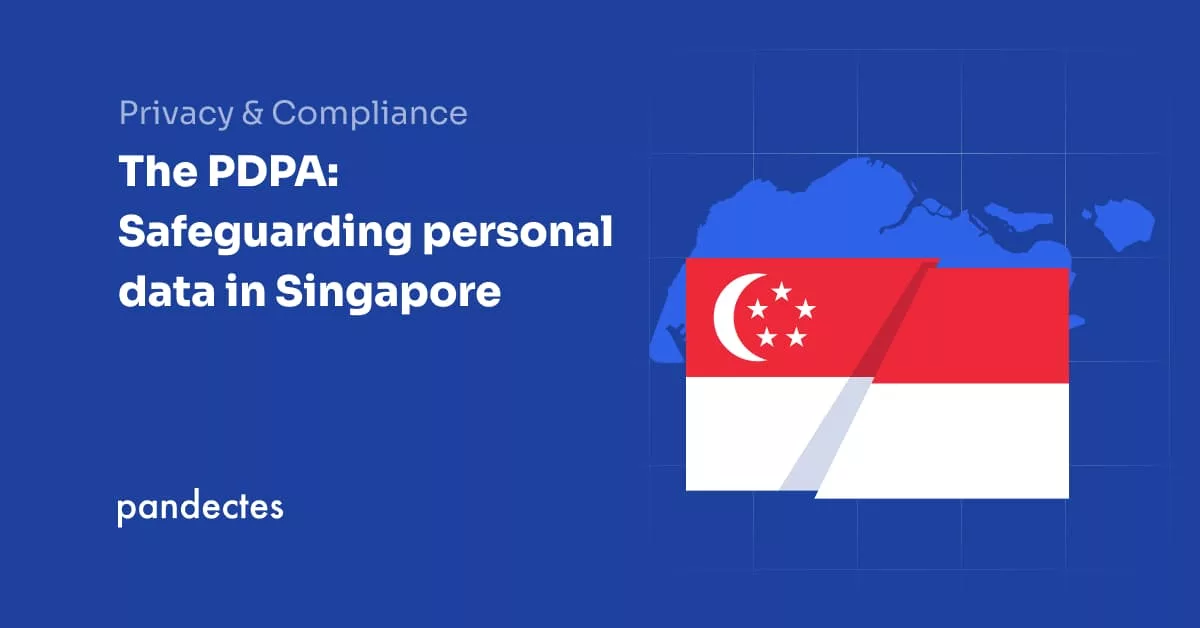
Final Thoughts
While Singapore has robust infrastructure security and cybercrime protections, its approach to privacy strikes a balance between individual rights and national security and social harmony priorities. The privacy methods discussed earlier remain effective but should be adapted to Singapore’s legal and cultural context.
Implementing these privacy measures in Singapore requires understanding both the technical aspects and the local legal framework. Most importantly, privacy-enhancing technologies should be used for legitimate purposes, such as protecting personal information, rather than circumventing legal restrictions.
Why Personal Online Privacy Matters
- Every online action leaves a data trail, including personally identifiable information (PII)
- Data breaches can lead to financial account hacking, email exposure, medical information leaks, and identity theft.
Risks of Using Work Devices for Personal Use
- Employers can potentially monitor activities on company-issued devices
- Monitoring may include tracking websites visited, files accessed, emails sent, and in some cases, keylogging
- The level of monitoring typically depends on company size and the sensitivity of information handled
Risks of Using Personal Devices for Work (BYOD)
- Creates multiple entry points into company systems
- Increases the risk of data being compromised or exposed
- Personal apps may access work contact databases
- Public Wi-Fi usage can expose sensitive information
- Insecure apps can introduce malware
- Devices may be lost, stolen, or used by others
- Former employees may retain access to company systems
18 Tips to Protect Your Online Privacy
- Avoid storing personal files on work devices
- Don’t save personal passwords in work device keychains
- Be cautious about opinions expressed in company chats
- Assume your internet traffic is monitored
- Be careful with devices in public places
- Check what monitoring software is on your computer
- Only allow the IT department to access your work computer remotely
- Use antivirus software
- Keep systems and programs updated
- Secure your Wi-Fi and network
- Use a VPN for encryption
- Avoid oversharing your screen during meetings
- Be careful what you share on social media
- Use strong passwords
- Secure mobile devices
- Be mindful of app permissions
- Be alert to phishing scams
- Use Two-Factor Authentication when possible

Comprehensive Online Privacy Protections
Let me elaborate on each of the privacy protection strategies mentioned in the article:
1. Avoid storing personal files on work-issued devices
- Work devices belong to your employer and can be accessed by IT staff
- Security measures like malware detection could lead to your personal files being wiped
- Company security tools might delete files during a breach response
- Consider using a personal USB drive for private data instead
2. Avoid saving personal passwords in work device keychains
- IT teams can potentially access password information stored on work devices
- Even encrypted transactions can be vulnerable with the right tools
- Use a separate personal password manager or device for your private accounts
3. Be cautious with company chats
- Messages on platforms like Slack, Campfire, and Google Hangout are stored on servers.
- Your entire chat history is retrievable by employers
- Treat company chat like a permanent, monitored communication channel
- Avoid expressing sensitive personal opinions that could be misinterpreted
4. Assume internet traffic is monitored
- Many employers track employees’ browsing habits and internet usage
- Avoid using work computers for personal business, especially second jobs
- Treat work computers as borrowed property with appropriate usage standards
- Consider whether your employer would approve of your browsing content
5. Be careful with your computer in public
- Public Wi-Fi presents significant security risks
- Cybercriminals can set up fake networks that appear legitimate
- Use a VPN when connecting to public networks
- Be mindful of who might be able to view your screen in public places
6. Check the monitoring software on your computer
- Employers should disclose monitoring software in employee handbooks
- Check “add/remove programs” on Windows or applications/services on Mac
- Research any unfamiliar software to understand its capabilities
- Don’t attempt to remove monitoring software, as this may alert IT
7. Limit remote access to your work computer
- Only allow IT department staff to remotely access your work device
- Remote access gives complete control over your computer
- Non-IT colleagues should not be given this level of access
8. Use comprehensive antivirus software
- Protect against malware that could compromise both your work and your employer’s systems
- A solution like Kaspersky Total Security provides broad threat detection
- Regular scans help identify potential security issues
9. Keep systems and programs updated
- Enable automatic updates for your operating system and applications
- Updates often contain critical security patches
- Outdated software is more vulnerable to exploitation
10. Secure your Wi-Fi network
- Enable password protection on your home Wi-Fi
- Change default router passwords, which are often weak security links
- Use WPA3 encryption when available
- Regularly update router firmware
11. Use a VPN for encryption
- Virtual Private Networks encrypt your internet traffic
- A VPN like Kaspersky Secure Connection prevents ISPs and others from seeing your activity
- Browser-based VPN extensions don’t require admin rights
- Combine VPN with incognito browsing for maximum privacy
- Note that company VPNs decrypt traffic at their servers, allowing monitoring
12. Be careful with screen sharing
- Close unnecessary windows before sharing your screen in meetings
- Be aware of what’s visible in your browser tabs, desktop, and notification banners
- Consider privacy implications for family members visible on webcams
- Use virtual backgrounds when appropriate
13. Be mindful of social media sharing
- Avoid announcing travel plans until after returning
- Limit personal information in profiles (birthdate, address, phone number)
- Disable location data in posts
- Avoid “fun” quizzes that ask security question-like information
- Be wary of contests and giveaways that may be scams
14. Use strong password practices
- Create complex passwords with mixed case letters, numbers, and symbols
- Use different passwords for different accounts
- Change passwords regularly
- Consider using a dedicated password manager
15. Secure mobile devices
- Use strong, non-obvious passcodes or biometric authentication
- Only download apps from official app stores
- Don’t jailbreak or root devices
- Enable remote wiping capabilities
- Keep device software updated
- Be cautious about clicking links, just as on computers
16. Manage app permissions carefully
- Review what access each app requests (camera, microphone, location, contacts)
- Regularly audit and revoke unnecessary permissions
- Delete unused apps, accounts, and programs
- Minimize your digital footprint to reduce potential vulnerabilities
17. Recognize and avoid phishing attempts
- Be suspicious of unexpected emails, especially those with attachments
- Verify sender identities before clicking links
- Access websites directly through your browser rather than email links
- Watch for telltale signs like misspellings, unusual urgency, or generic greetings
18. Implement Two-Factor Authentication
- Add a second verification step beyond passwords.
- Options include SMS codes, authenticator apps, biometrics, or physical security keys.
- Significantly increases account security even if passwords are compromised
- Enable 2FA on all critical accounts (email, banking, social media)
By implementing these comprehensive protections, you can significantly reduce your vulnerability to privacy breaches and security incidents in our increasingly connected work-from-home environment, where personal and professional digital lives overlap.

Online Privacy Protection in Singapore
Based on the privacy principles in the article, here’s how these protections specifically apply to Singapore’s context:
Singapore’s Digital Landscape and Privacy Concerns
Singapore has one of the highest internet penetration rates in the world, with nearly universal connectivity and extensive use of digital services. This technological advancement, combined with Singapore’s work-from-home trends since the pandemic, makes privacy protection particularly relevant.
Legal Framework in Singapore
The Personal Data Protection Act (PDPA) is Singapore’s primary data protection legislation. When implementing privacy protections, it’s essential to understand:
- Organizations must obtain consent before collecting, using, or disclosing personal data
- Individuals have the right to access and correct their personal data
- Organizations must secure personal data and notify of breaches
- The PDPC (Personal Data Protection Commission) enforces these regulations
Applying the 18 Privacy Protections in Singapore
1. Avoiding personal files on work devices
In Singapore, employers generally have broad rights to monitor company equipment. The Employment Act does not explicitly limit workplace surveillance, making this tip especially important.
2. Personal passwords on work devices
Singapore has seen increasing cybercrime rates, with the Cyber Security Agency of Singapore (CSA) reporting numerous credential theft incidents. Keep passwords separate from work devices.
3. Company chat caution
Singapore’s employment laws generally favor employer rights regarding monitoring work communications. Treat all company platforms as potentially monitored.
4. Internet traffic monitoring
Many Singapore employers utilize monitoring software, which is generally permitted under local law when conducted on company equipment.
5. Public computing security
Singapore’s extensive public Wi-Fi network (Wireless@SG) is convenient but not always secure. Use a VPN when connecting to these networks.
6. Checking for monitoring software
Singapore employers are not explicitly required to disclose all monitoring, though transparency is encouraged by the PDPC. Check your employment contract and IT policies.
7. Limiting remote access
This is especially relevant in Singapore’s highly connected environment, where remote work tools are widely used.
8. Antivirus software
Singapore’s Cyber Security Agency recommends comprehensive protection. Consider solutions that comply with Singapore’s cybersecurity guidelines.
9. System updates
The CSA regularly issues advisories about vulnerabilities. Following their guidance on updates is recommended.
10. Wi-Fi security
Singapore’s high urban density means many Wi-Fi networks in close proximity. Secure your network to prevent neighbors or nearby people from accessing it.
11. VPN usage
While VPNs are legal in Singapore, be aware that the government maintains some internet monitoring. Choose reputable VPN services with strong privacy policies.
12. Screen sharing caution
With Singapore’s extensive use of videoconferencing, this remains essential advice.
13. Social media privacy
Singapore has among the highest social media penetration rates globally. Be particularly careful about sharing location data in this small, densely populated country.
14. Strong passwords
The CSA recommends explicitly complex passwords and regular changes as part of its public advisories.
15. Mobile device security
With Singapore having one of the highest smartphone penetration rates globally, mobile security is fundamental. Consider enabling the Singapore Police Force’s ScamShield app.
16. App permission management
Be especially cautious with apps that request access to Singapore-specific services like SingPass.
17. Phishing awareness
Singapore has seen numerous phishing campaigns impersonating government services (IRAS, CPF, MOM). Verify communications through official channels.
18. Two-factor authentication
Many Singapore services including SingPass (the national digital identity system) offer or require 2FA. Enable it wherever available.
Singapore-Specific Considerations
- SingPass Protection: Guard your SingPass credentials carefully as they provide access to numerous government services
- QR Code Caution: Singapore’s extensive use of QR codes (SafeEntry, payments) creates additional vectors for potential privacy breaches
- Surveillance Awareness: Singapore has an extensive public camera network; be mindful of this when considering privacy in public spaces
- Bank Account Security: Singapore’s PayNow and FAST transfer systems make financial fraud particularly damaging as transactions are instant.
By adapting these privacy practices to Singapore’s specific digital ecosystem, you can better protect your personal information while navigating the increasingly blurred boundaries between work and personal technology use.
Singapore’s Anti-Scam Centre (ASC) Measures
Rapid Response Framework
24/7 hotline (1800-722-6688)
Partnerships with banks for rapid fund freezing
Ability to freeze accounts within hours of reports
ScamShield Application
Filters scam calls and messages
Blocks known scam numbers
Reports new scam numbers to central database
Project FRONTIER
Cross-border collaboration with international police
Targets international scam syndicates
Joint operations to disrupt scam infrastructure
Bank Account Tracing
Sophisticated monitoring of money flow
Quick identification of money mule accounts
Freezing and recovery of scammed funds
Public Education Initiatives
Targeted awareness campaigns
Scam alert messaging systems
Community engagement programs
Industry Partnerships
Collaboration with telecommunications companies
Working with financial institutions
Joint prevention protocols with e-commerce platforms
Legal and Enforcement Actions
Prosecution of scammers and money mules
Disruption of communication channels
Seizure of criminal proceeds
Effectiveness and Challenges
The ASC has recovered significant funds since its establishment in 2019, but challenges remain:
Increasingly sophisticated scam techniques
The cross-border nature of many scam operations
Legal jurisdictional limitations
Technology evolution outpacing prevention measures
Human psychology that makes people vulnerable
For Singapore residents, staying vigilant and following the ASC’s guidance remain the best defense against scams. Report suspicious activities immediately to the Anti-Scam Helpline or the police.RetryCanalyse all scams in detail.
Analysis of Scam Types in Singapore
Government Official Impersonation Scams
These involve elaborate schemes in which scammers pose as officials from the police, MAS, or other agencies. They claim the victim is implicated in criminal activities and ultimately request transfers to “safe government accounts.”
Banking-Related Scams
Sophisticated operations use spoofed SMS messages and phishing sites that mirror legitimate banking portals, often targeting vulnerable periods like holidays when vigilance may be lower.
Job and Investment Scams
These use social engineering to build trust gradually, starting with small tasks and payments before requesting more significant “investments” or fees. Investment scams have the highest average losses, often exceeding $250,000 per victim.
Technical and Psychological Tactics
Across all scams, sophisticated tactics include:
Call spoofing technology to display official numbers
AI-generated content becoming increasingly convincing
Psychological manipulation using urgency, authority, and fear
Multi-stage approaches that evolve across different scam types
Emerging Trends
The analysis also covers concerning developments like:
Voice cloning and deepfake technology enabling more convincing impersonations
Cross-platform integration makes scams harder to detect
Demographic-specific targeting based on vulnerability profiles
The complete analysis includes detailed methodologies, statistical impacts, psychological manipulation tactics, and prevention strategies for ten major scam categories prevalent in Singapore.
1. Government Official Impersonation Scams
Methodology
- Initial Contact: Unsolicited calls from individuals claiming to be from government agencies (Police, MAS, Ministry of Health, Immigration)
- Escalation: Victims are told they’re implicated in illegal activities (money laundering, criminal cases, immigration violations)
- Pressure Tactics: Threats of arrest, prosecution, or deportation create urgency
- Technical Deception: Call spoofing to display official numbers; use of official logos in video calls
- Fund Extraction: Requests to transfer money to “safe government accounts” for “verification”
Statistical Impact
- $151.3 million lost in 2024 (1,504 cases)
- Average loss per victim: Approximately $100,000
- Demographic most affected: Middle-aged to elderly residents with substantial savings
Red Flags
- Government agencies never request money transfers for investigations
- Officials don’t conduct investigations over phone/messaging platforms
- Government agencies don’t use personal bank accounts
2. Banking-Related Scams
Methodology
- Initial Approach: SMS/emails/calls claiming to be from banks about suspicious transactions
- Authentication Theft: Phishing links requesting login credentials, OTPs, or credit card details
- Account Takeover: Immediate draining of funds once access is obtained
- Hybrid Approach: Often evolves into government impersonation scams if the victim is hesitant
Technical Elements
- Sophisticated phishing websites that mirror legitimate banking portals
- SMS spoofing to appear in the same thread as legitimate bank messages
- Use of social engineering to bypass two-factor authentication
Statistical Impact
- The second highest scam category by financial losses
- Particular spikes during holiday seasons and year-end periods
- Growing trend of targeting SME business accounts with higher transaction limits
3. Job Scams
Methodology
- Recruitment: Offered through messaging apps, social media, or fake job portals
- Job Description: Simple tasks like liking videos, reviewing products, or data entry
- Trust Building: Small payments initially made to victims to establish legitimacy
- Investment Requirement: Eventually asked to invest or pay fees to continue earning
- Account Access: Sometimes recruited as money mules by providing account access
Operational Structure
- Typically operated by syndicates from regional countries
- Multi-level marketing-style recruitment where victims become perpetrators
- Use of cryptocurrency for payments to avoid detection
Statistical Impact
- Primarily targets younger demographics (18-35)
- Sharp increases coinciding with economic downturns
- Average initial losses are relatively small ($2,000-5,000) but can escalate
4. Investment Scams
Methodology
- Legitimate Facade: Impersonation of licensed financial institutions or creation of professional-looking platforms
- Return Manipulation: Display of falsified high returns to entice further investment
- Social Proof: Testimonials from “successful investors” and fake news endorsements
- Exit Strategy: Platform “technical issues” or complete disappearance when withdrawal is attempted
Technical Sophistication
- Advanced trading platforms with real-time but manipulated data
- Integration with legitimate financial news sources
- Use of AI-generated content for communications and “analysis”
Statistical Impact
- Highest average loss per victim (often exceeding $250,000)
- Long-term operation before detection (typically 6-18 months)
- Growth in cryptocurrency-based investment scams
5. E-Commerce Scams
Methodology
- Listing Creation: Fake listings on legitimate platforms (Carousell, Shopee, Lazada)
- Price Incentives: Items listed significantly below market value
- Communication Shift: Moving conversations off-platform to avoid detection
- Payment Redirection: Requests for direct bank transfers instead of platform payments
Item Categories Most Affected
- High-demand electronics (gaming consoles, smartphones)
- Event tickets (concerts, sports events)
- Luxury goods and limited-edition items
- COVID-related items during the pandemic (masks, test kits)
Statistical Impact
- Highest number of cases but lower average losses ($500-2,000)
- Seasonal spikes during holiday shopping periods
- High rate of repeat victimization
6. Social Media Impersonation Scams
Methodology
- Account Cloning: Creation of duplicate profiles of friends/family
- Trust Exploitation: Leveraging established relationships for credibility
- Emergency Narrative: Stories of urgent financial need or time-sensitive opportunities
- Relationship Building: Romance scams involving months of communication before financial requests
Technical Approaches
- Use of stolen photos and personal information
- Strategic targeting of contacts who aren’t in regular communication
- Creation of elaborate backstories verifiable through fake social media history
Statistical Impact
- Disproportionately affects elderly users less familiar with digital security
- Average losses between $5,000-20,000
- High emotional impact beyond financial losses
7. Tech Support Scams
Methodology
- Alert Generation: Pop-up messages claiming device infection or security breach
- Helpline Contact: Providing phone numbers for “technical support”
- Remote Access: Convincing victims to install remote access software
- Problem Fabrication: Creating fake issues to justify payment for “repairs”
Technical Elements
- Browser script exploits to create persistent pop-ups
- Fake scanning tools showing non-existent problems
- Use of technical jargon to overwhelm and confuse victims
Statistical Impact
- Lower average financial losses but a high number of attempts
- Often targets less tech-savvy individuals
- Secondary damage through malware installation and data theft
8. Loan Scams
Methodology
- Easy Approval: Promises of loans without credit checks or with minimal documentation
- Fee Collection: Demands for processing fees, insurance, or administrative costs before loan disbursement
- Information Harvesting: Collection of personal and financial information for identity theft
Operational Structure
- Fake websites mimicking legitimate financial institutions
- Heavy advertising during economic downturns
- Use of messaging apps for communication to avoid regulatory oversight
Statistical Impact
- Targets financially vulnerable individuals
- Average losses between $1,000-5,000
- Often leads to identity theft and further financial impacts
9. Prize/Lottery Scams
Methodology
- Win Notification: Messages claiming the recipient has won a contest they never entered
- Verification Process: Requests for personal information to “verify” identity
- Fee Requirement: Demands for taxes, processing fees, or transfer charges to receive winnings
Technical Approaches
- Mass messaging campaigns targeting thousands simultaneously
- Use of legitimate company names and logos
- Creation of fake award certificates and official documents
Statistical Impact
- Lower average losses but high success rate due to volume
- Primarily affects elderly and less-educated demographics
- Often international in nature, making recovery difficult
10. Cryptocurrency Scams
Methodology
- Initial Education: Offering to teach cryptocurrency trading to novices
- Guided Investment: Directing victims to specific platforms controlled by scammers
- Profit Display: Showing artificial gains to encourage more significant investments
- Withdrawal Issues: Creating excuses or additional fee requirements when victims attempt to withdraw
Technical Sophistication
- Custom trading platforms with manipulated values
- Integration with legitimate blockchain explorers showing confirmed transactions
- Complex smart contracts designed to lock funds permanently
Statistical Impact
- Rapidly growing category with very high individual losses
- Difficult to trace due to blockchain anonymity
- Technical complexity creates barriers to reporting and understanding
Emerging Trends and Future Concerns
AI-Enhanced Scams
- Voice cloning technology enabling impersonation of known contacts
- Deepfake video calls impersonating officials or family members
- AI-generated communication that learns and adapts to victim responses
Cross-Platform Integration
- Scams starting on one platform and migrating to others to evade detection
- Multiple simultaneous approaches to increase credibility
- Integration of various scam types (e.g., job scam evolving into investment scam)
Targeting Specific Demographics
- Elderly-specific scams exploiting health concerns or isolation
- Youth-targeted scams through gaming platforms and influencer impersonation
- Professional-targeted scams with industry-specific knowledge
Psychological Manipulation Tactics
Common Across All Scams
- Urgency Creation: Limited-time opportunities or threats requiring immediate action
- Authority Exploitation: Leveraging respect for institutions and officials
- Reciprocity: Providing small benefits to create an obligation for compliance
- Social Proof: Demonstrating others’ supposed success or participation
- Scarcity: Portraying limited availability of opportunities
- Fear Stimulation: Creating anxiety about negative consequences
- Isolation: Instructing victims not to discuss with others
Neurological Impact
- Stress response inhibiting critical thinking capabilities
- Emotional activation bypassing logical assessment
- Decision fatigue from prolonged engagement reduces resistance
Victim Recovery and Psychological Impact
Financial Recovery Rates
- Government impersonation scams: <10% recovery rate
- Banking scams: 15-30% recovery if reported within 24 hours
- E-commerce scams: <5% recovery rate
Psychological Effects
- Financial trauma syndrome affecting future decision-making
- Trust issues with institutions and technology
- Shame and self-blame leading to underreporting
- Secondary victimization through family and community judgment
Preventive Measures and Resources
Individual Protection
- Use of ScamShield application
- Regular financial account monitoring
- Verification through official channels only
- Time buffer for significant financial decisions
Institutional Support
- Anti-Scam Centre hotline: 1800-722-6688
- Bank fraud departments with 24/7 reporting capability
- Community awareness programs for vulnerable populations
- Psychological support services for scam victims
Technological Solutions
- Two-factor authentication implementation
- Transaction limits and abnormal activity alerts
- Delayed processing for unusual transactions
- Cross-bank coordination for suspicious activity
Analysis of Scams and Anti-Scam Centre Measures in Singapore
Common Scam Types in Singapore
- Government Official Impersonation Scams
- Impersonating police, MAS, or other officials
- Claims of money laundering investigations
- Requests for fund transfers to “safe accounts”
- $151.3 million lost in 2024 (1,504 cases)
- Banking-Related Scams
- Fake bank staff claiming suspicious transactions
- Phishing links to steal banking credentials
- Often escalate to government impersonation
- Job Scams
- Promises of high pay for minimal work
- Recruitment via messaging platforms
- Initial small payments to build trust before larger scams
- Investment Scams
- Fake investment platforms with manipulated returns
- “Pump and dump” schemes for cryptocurrencies
- Impersonation of legitimate financial institutions
- E-Commerce Scams
- Fake listings on legitimate platforms
- Non-delivery after payment
- Counterfeit goods
- Social Media Impersonation
- Clone accounts of friends/family
- Requests for urgent financial help
- Relationship/romance scams
Singapore’s Anti-Scam Centre (ASC) Measures
- Rapid Response Framework
- 24/7 hotline (1800-722-6688)
- Partnerships with banks for rapid fund freezing
- Ability to freeze accounts within hours of reports
- ScamShield Application
- Filters scam calls and messages
- Blocks known scam numbers
- Reports new scam numbers to central database
- Project FRONTIER
- Cross-border collaboration with international police
- Targets international scam syndicates
- Joint operations to disrupt scam infrastructure
- Bank Account Tracing
- Sophisticated monitoring of money flow
- Quick identification of money mule accounts
- Freezing and recovery of scammed funds
- Public Education Initiatives
- Targeted awareness campaigns
- Scam alert messaging systems
- Community engagement programs
- Industry Partnerships
- Collaboration with telecommunications companies
- Working with financial institutions
- Joint prevention protocols with e-commerce platforms
- Legal and Enforcement Actions
- Prosecution of scammers and money mules
- Disruption of communication channels
- Seizure of criminal proceeds
Effectiveness and Challenges
The ASC has recovered significant funds since its establishment in 2019, but challenges remain:
- Increasingly sophisticated scam techniques
- The cross-border nature of many scam operations
- Legal jurisdictional limitations
- Technology evolution outpacing prevention measures
- Human psychology that makes people vulnerable
For Singapore residents, staying vigilant and following the ASC’s guidance remain the best defense against scams. Report suspicious activities immediately to the Anti-Scam Helpline or the police.
Social Engineering: Anatomy of Manipulation and Defense
Social Engineering Techniques
Psychological Manipulation Strategies
- Authority Impersonation
- Scammers pose as official representatives (e.g., bank officers, government officials)
- Exploit victims’ respect for authority and tendency to comply with perceived authoritative figures.
- Use official-sounding language, titles, and fabricated credentials.

- Fear and Urgency Tactics
- Create artificial time pressures to prevent critical thinking
- Trigger emotional responses like panic or anxiety
- Common threats include:
- Legal consequences
- Financial penalties
- Account suspension
- Potential criminal investigations

- Trust Building and Rapport
- Develop a seemingly genuine conversational flow
- Use personal details to appear credible
- Gradually escalate requests, starting with minor, seemingly innocuous asks
- Exploit human tendency to be helpful and avoid confrontation

- Information Harvesting
- Collect fragmentary personal information from multiple sources
- Use social media, public databases, and previous data breaches
- Craft highly personalized, convincing narratives
Technical Manipulation Methods
- Phishing Techniques
- Spoofed communication channels
- Lookalike websites and email addresses
- Malicious links and attachments
- Screen sharing and remote access exploitation
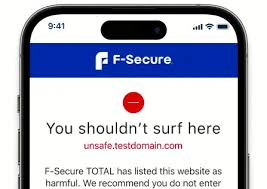
- Multi-Stage Scam Progression
- Complex narratives involving multiple fake personas
- Gradual erosion of victim’s skepticism
- Continuous redirection and technical jargon
Prevention Strategies
Personal Awareness and Education

- Critical Thinking Development
- Always verify unsolicited communications independently
- Use official contact methods from verified sources
- Never click links or download attachments from unknown sources
- Recognize and resist emotional manipulation

- Communication Red Flags
- Unsolicited contact requesting personal information
- Pressure to act immediately
- Requests for financial transfers
- Communication via unofficial channels
- Threats or aggressive language
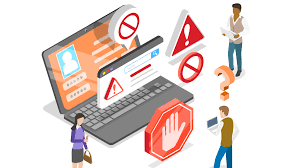
Technical Protective Measures
- Digital Security Practices
- Use multi-factor authentication
- Regularly update software and security systems
- Install reputable antivirus and anti-malware solutions
- Use dedicated communication and banking apps
- Enable transaction notifications
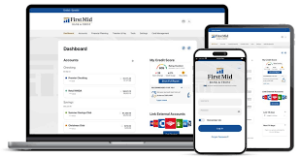
- Information Protection
- Minimize public personal information sharing
- Use privacy settings on social platforms
- Create complex, unique passwords
- Regularly monitor financial statements
- Use virtual credit cards for online transactions
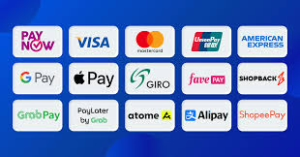
Institutional and Technological Interventions
- Technological Defenses
- Implement AI-driven fraud detection systems
- Develop advanced caller ID and communication verification tools
- Create comprehensive scam reporting mechanisms
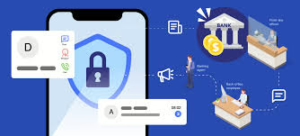
- Educational Initiatives
- Regular public awareness campaigns
- School and workplace training programs
- Clear, accessible resources on emerging scam techniques
- Collaborative efforts between government, tech companies, and financial institutions
Psychological Resilience

- Emotional Intelligence
- Recognize personal emotional triggers
- Practice calm, methodical responses to unexpected communications
- Develop healthy skepticism without becoming paranoid
- Community Awareness
- Share scam experiences
- Supporting vulnerable community members
- Create support networks for scam victims
Emerging Trends
- Increasing sophistication of AI in social engineering
- Cross-platform information integration
- More personalized, contextually relevant scam attempts
Conclusion
Social engineering exploits fundamental human psychological vulnerabilities. Comprehensive defense requires a multi-layered approach combining technological solutions, personal awareness, and continuous education.
Maxthon

Maxthon has set out on an ambitious journey aimed at significantly bolstering the security of web applications, fueled by a resolute commitment to safeguarding users and their confidential data. At the heart of this initiative lies a collection of sophisticated encryption protocols, which act as a robust barrier for the information exchanged between individuals and various online services. Every interaction—be it the sharing of passwords or personal information—is protected within these encrypted channels, effectively preventing unauthorised access attempts from intruders.
Maxthon private browser for online privacyThis meticulous emphasis on encryption marks merely the initial phase of Maxthon’s extensive security framework. Acknowledging that cyber threats are constantly evolving, Maxthon adopts a forward-thinking approach to user protection. The browser is engineered to adapt to emerging challenges, incorporating regular updates that promptly address any vulnerabilities that may surface. Users are strongly encouraged to activate automatic updates as part of their cybersecurity regimen, ensuring they can seamlessly take advantage of the latest fixes without any hassle.
In today’s rapidly changing digital environment, Maxthon’s unwavering commitment to ongoing security enhancement signifies not only its responsibility toward users but also its firm dedication to nurturing trust in online engagements. With each new update rolled out, users can navigate the web with peace of mind, assured that their information is continuously safeguarded against ever-emerging threats lurking in cyberspace.
